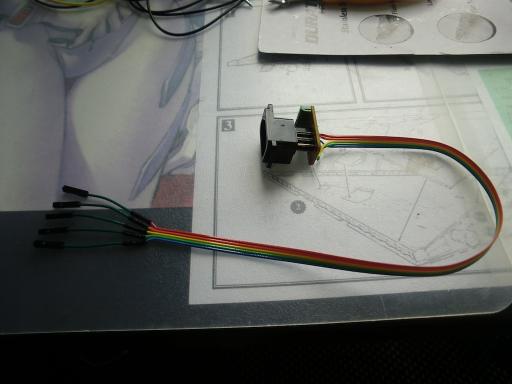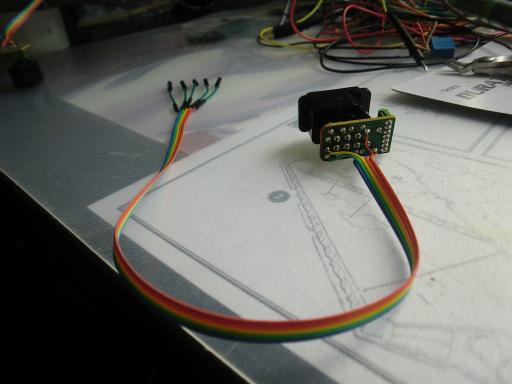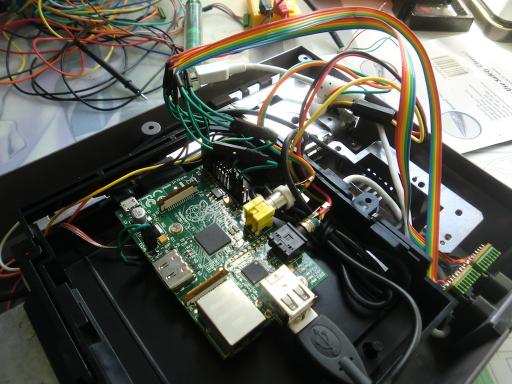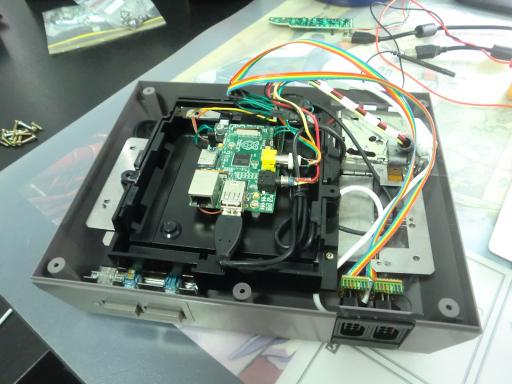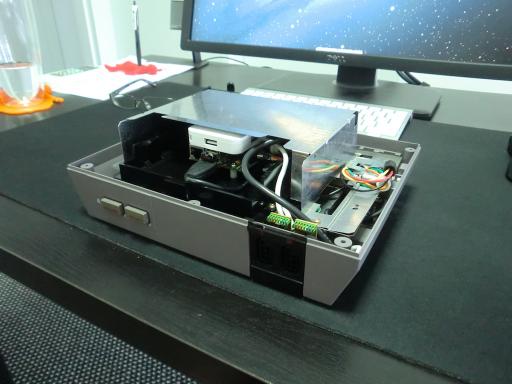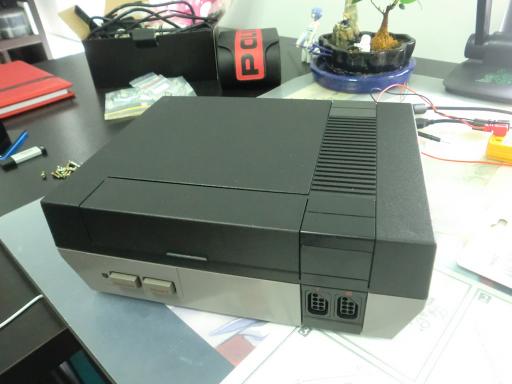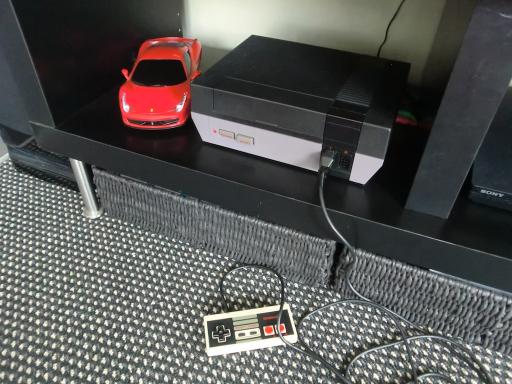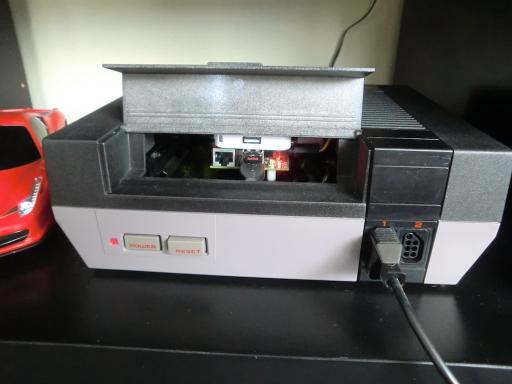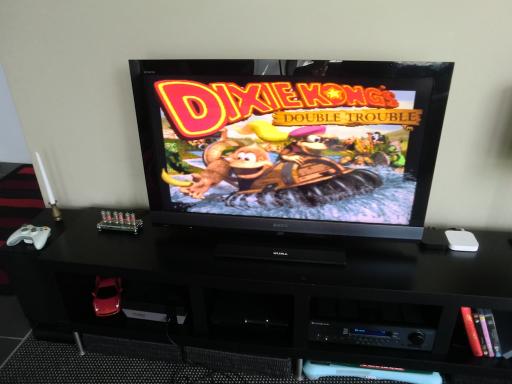The controller ports only need 5 of the wires to be connected, there is quite a bit of documentation online for this. The GPIO driver has all the necessary information.
There are pinouts for the NES ports online too.
I used some ribbon cable to connect the ports and added Dupont single pin connectors to the end so they can be plugged into the GPIO ports on the Raspberry Pi.
Wiring to the GPIO port is a little messy since some of the pins are shared. I ended up making extensions to some of the pins with 2 and 3 pin headers on one end and a Dupont connector on the other, that way I could plug in 2 and 3 other wires into those pins, respectively.
Putting it all together with an extra USB hub plugged in so I can access a USB port from the cartridge bay later.
The case is sealed up. The lid is a new colour now of course, the original plastic was becoming yellowish so I thought black would make it look nicer. 6 coats of black and 3 coats of clear later and the result is pretty good.
After all the software is installed and the emulator is running, I have a functional NES/SNES machine!
-i
